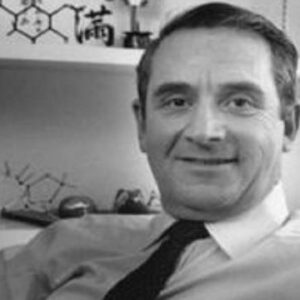James B. Sumner was an American chemist who won the Nobel Prize in chemistry in 1946 for isolating the ‘urease’ enzyme. He established that enzymes have a similar nature to proteins, which was a contentious topic at the time. He was the first scientist to isolate and crystallize the jack bean enzyme. His discovery was initially dismissed because no one believed it was possible to isolate the enzyme. Richard Willstatter, a well-known German scientist, mocked Sumner, believing that what he asserted was totally impossible. Sumner was granted credit for his initial discovery after another scientist named John H. Northrop succeeded in isolating another enzyme called ‘Pepsin’ in 1930 at the ‘Rockfeller Institute.’ His study was first based on analytical procedures, which yielded no notable results despite his efforts. He then decided to isolate the ‘urease’ enzyme in its purest form, something that had never been done before. It appeared that he had found a generic procedure for isolating and crystallizing enzymes, which had never been done before, after it was established that he had truly generated an enzyme from his research. For this discovery, he shared the Nobel Prize with Northrop and Wendell M. Stanley.
Childhood and Adolescence
James B. Sumner was born in Canton, Massachusetts, on November 19, 1887. His forefathers came from Bicester, England, and arrived in Boston, Massachusetts, in 1636.
Charles Sumner was a cotton manufacturer, and Elizabeth Rand Kelly Sumner was his mother. Amie Sumner was his sister’s name.
His grandfather had a farm and a cotton mill, while his father had a vast estate.
During his scholastic years, he went at Eliot Grammar School for a few years.
He afterwards attended the ‘Roxbury Latin School in West Roxbury, Massachusetts.’
In 1906, he graduated from high school and enrolled at ‘Harvard University,’ where he earned a bachelor’s degree in chemistry in 1910.
After a gunshot accident as a youngster, he was left with only one arm for the rest of his life.
In 1912, he left his assistantship in chemistry at Worcester Polytechnic Institute in Worcester, Massachusetts, to study biochemistry at Harvard Medical School under Professor Otto Folin.
Despite Professor Otto Folin’s belief that Sumner could not be a competent scientist with one hand, he persisted and received his PhD in chemistry from ‘Harvard University’ in 1914.
Career of James B. Sumner
After receiving his bachelor’s degree, James B. Sumner began working at his uncle’s cotton knitting mill, but he quickly became dissatisfied with the job.
From 1910 to 1911, he worked as a Chemistry and Physiology teacher at Mount Allison University in Sackville, New Brunswick, Canada.
From 1911 to 1912, he worked as a chemistry assistant at the ‘Worcester Polytechnic Institute.’
Sumner was in Switzerland at the onset of WWI when he was offered a position teaching biochemistry at Cornell Medical School in Ithaca, New York. From 1914 till 1929, he worked there.
In 1921, he was awarded an American-Belgian fellowship at the early phases of his studies. He chose to travel to Brussels and work with Jean Effront, an expert on enzymes. This strategy failed because Effront considered Sumner’s method of isolating the ‘unrease’ enzyme was suspect.
He returned to Ithaca and continued his investigation till he was successful in 1926. Sumner was able to secure a full chair in 1929 despite the fact that every biochemist who heard of his finding disbelieved him.
While working at the ‘Cornell Medical School’ laboratory in 1937, he succeeded in isolating a second enzyme termed ‘Catalase’ in the crystalline form.
He later became the Director of Cornell University’s ‘Enzyme Chemistry Laboratory,’ which he held from 1947 until 1955.
Major Projects of James B. Sumner
In 1927, James B. Sumner released his first book, ‘Textbook of Biological Chemistry.’
With G. Fred Somers, he published his second book, ‘The Chemistry and Methods of Enzymes,’ in 1943. ‘Laboratory Experiments in Biological Chemistry,’ his second collaboration with Somers, was published in 1944.
In 1951-52, he and Karl Myrback collaborated on their fourth book, ‘The Enzymes: Chemistry and Mechanism of Action,’ which was published in four volumes.
Achievements & Awards of James B. Sumner
In 1937, James B. Sumner was awarded a Guggenheim Fellowship to work at Professor The Svedberg’s Uppsala laboratory.
In 1937, he received the ‘Scheele Medal.’
He was awarded the Nobel Prize in Chemistry in 1946.
In 1948, he was elected to the ‘National Academy of Sciences of the United States of America.’
In 1949, he was named a Fellow of the ‘American Academy of Arts and Sciences.’
Personal History and Legacy
On July 10, 1915, he married Bertha Louise Ricketts, an American novelist, whom he later divorced in 1930. From this marriage, he produced four children. Roberta and Prudence were his two daughters.
Agnes Paulina Lundkvist was his second wife, whom he married in 1931 and divorced afterwards. This marriage resulted in him having no children.
His third marriage, to Mary Morrison, took place in 1943, and he had two children with her.
On August 12, 1955, in Buffalo, New York, USA, James B. Sumner died of cancer.
Estimated Net Worth
James is one of the wealthiest chemists and one of the most well-known chemists. James B. Sumner’s net worth is estimated to be $1.5 million, according to Wikipedia, Forbes, and Business Insider.
Trivia
He enjoyed hunting and was unintentionally wounded in the left arm by a partner during one of his hunting trips. He had to have his left arm amputated from the elbow down after an accident when he was 17 years old. He had to learn how to use his right arm from the beginning, including how to write, because he was left-handed, and he tried to excel in a variety of sports.


